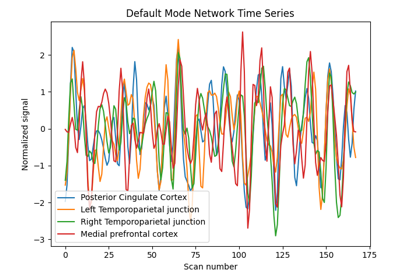Note
This page is a reference documentation. It only explains the function signature, and not how to use it. Please refer to the user guide for the big picture.
nilearn.datasets.fetch_coords_dosenbach_2010¶
- nilearn.datasets.fetch_coords_dosenbach_2010(ordered_regions=True)[source]¶
Load the Dosenbach et al 160 ROIs.
These ROIs cover much of the cerebral cortex and cerebellum and are assigned to 6 networks.
See Dosenbach et al.[1].
- Parameters:
- ordered_regions
bool, default=True ROIs from same networks are grouped together and ordered with respect to their names and their locations (anterior to posterior).
- ordered_regions
- Returns:
- data
sklearn.utils.Bunch Dictionary-like object, contains:
‘rois’:
pandas.DataFramewith the coordinates of the 160 ROIs in MNI space.‘networks’:
numpy.ndarrayofstr, list of network names for the 160 ROI.- ‘description’
str Description of the dataset.
- ‘description’
- data
References
